By: Donna Funk, Principal, Pinion
After a year of questions surrounding the Inflation Reduction Act, there are a few myths to dispel. I've encountered three prevalent misconceptions related to the 45Z clean fuel credit, 45Q carbon capture credit and tax credit transfers. Misunderstanding these provisions could lead to a rude awakening in the coming year.
“The IRA contains significant funding and tax credits for a range of activities from production of low-carbon fuels to projects that sequester carbon. The law and the guidance that has been released so far are complicated, but it’s important to understand the requirements if you plan to take full advantage of these programs,” advises Pinion government affairs expert, Brian Kuehl.
IRA Myths Debunked
You cannot claim both the 45Z and 45Q tax credits in the same year.
As things currently stand, you cannot claim both the 45Z clean fuel credit and 45Q carbon capture credit in the same year. Until more guidance is provided, we have to work under the assumption that the 45Q and 45Z tax credits are “assigned” to the carbon molecule and not the taxpayer. In other words, two different taxpayers cannot collectively claim 45Q and 45Z. If you collaborate with an entity involving both clean fuel production and carbon capture, be sure to communicate about who is claiming which credit.
45Z and 45Q tax credits can only be transferred one time.
Tax credit transfers allow entities the benefit of transferring their credit to a third-party for cash. Partnership (LLC) or Subchapter S Corporation structures can transfer credits to other eligible entities or individuals – but only once. Once they are transferred to another entity, they cannot be further passed on. On the other hand, members and shareholders cannot transfer credits allocated to them from the business at all. Keep these restrictions in mind as you dive into tax planning.
Not everyone can get $1/ gallon.
Under section 45Z (the clean fuel credit), qualified ethanol producers can get up to $1 per gallon of corn-based ethanol. However, to get the full $1.00, plants need to earn a 0 Carbon Intensity (CI) score and meet the wage and apprenticeship rules. While you may benefit from the clean fuel credit – and you may receive the full $1.00 – don’t assume that will be the case.
“There are a large range of activities a plant can do to reduce its CI score,” Kuehl encourages. “As we wait for the Treasury Department to release 45Z regulations, companies should work to increase the use of renewable energy, sequester/sell carbon dioxide, and encourage farmers to reduce the carbon intensity of their feedstock.”
A record boost to the ethanol industry.
While some of this news may be disappointing to hear – don’t be discouraged. The IRA represents a historic investment to the industry and holds a multitude of opportunities for both ethanol producers and farmers. I encourage you to approach the upcoming year with eyes wide open, talk with your financial advisor about these matters and seize the opportunities that are on the table.



